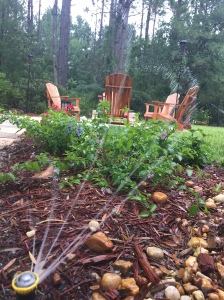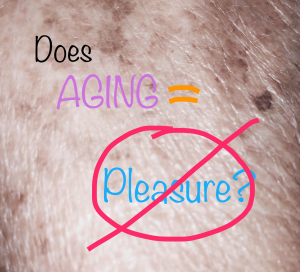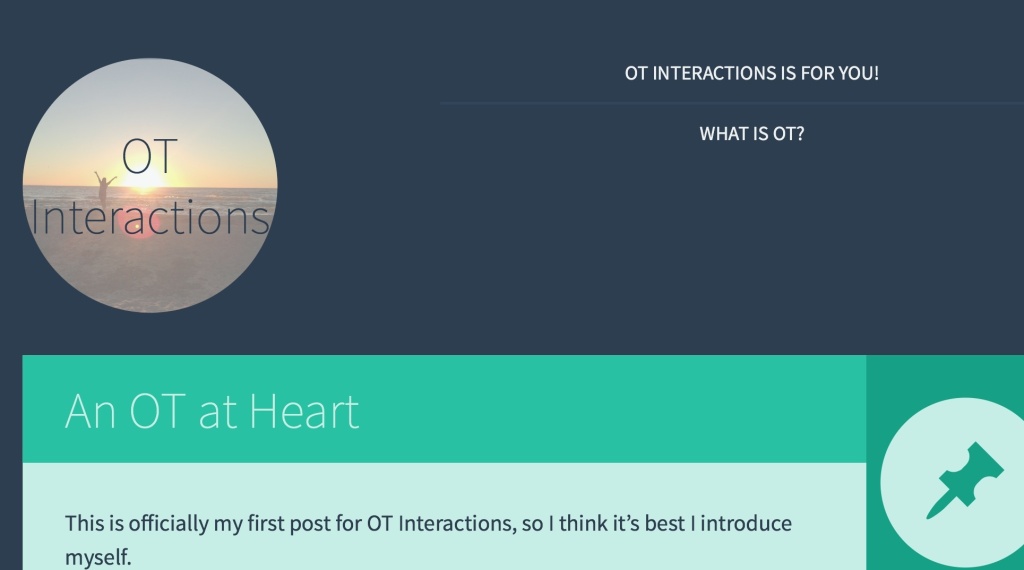
This is the last of a five-part series on Elusive Pleasures, in which we’re exploring losses, their associated neural connections and ways to adapt to changes and renew pleasure.

In the first installment, we learned that the brain has a pleasure center, and that sensations travel along the nervous system to bring messages to the brain. The brain is a whiz at associating emotionally-charged memories (especially fear and pleasure) with sensations (such as sights, sounds and aromas). That’s why something as simple as changing the sprinkler heads in my yard could cause the pleasure response in my brain not to fire. This whole series began when I found the new sprinkler sounds detracted from the enjoyment I had sipping coffee on the back porch.
In the second post, we learned that pleasure can be associated not only to incoming sensations, but also to underlying perceptions or beliefs. Thoughts are neuronal connections too! In this segment, I examined my struggle to accept some physical impairments, and realized I had an erroneous underlying belief: that I needed to do things better than others to feel good. I wondered: Can change in underlying beliefs restore pleasure?

In the third installment of the series, we explored how important pleasure is in life, and how making new connections in our brains can create the experience of pleasure. We realized the best new connections happen inside our brains. The principle, “neurons that fire together, wire together” suggests that if we repeatedly pair one sensation or movement with another, we not only enhance their function, but eventually, we create an automatic response. We tried this by picking something that makes us feel good and pairing it with a new sensation or movement –then practicing it regularly, so the two become automatically associated. If you did your homework, you likely found that when you experience the sensation you paired with your pleasurable activity, your brain eventually delivered that pleasure response! We also learned that adding physical exercise to pleasurable thoughts increased those neuronal connections.

In the fourth installment, we learned ten brain exercises to improve our pleasure responses. We found that learning new things, doing routine things differently, running (or other strenuous exercise) and even foods, probiotics and experiencing orgasm can all strengthen our neuronal connections for pleasure.
In this segment, we’ll look more in depth at ways we can establish long-term neuronal connections that can really make the difference in adjusting to major life changes.
This is the part where we learn how to dig in and make changes in our erroneous underlying thoughts and beliefs.
Maybe you’re familiar with some of the basic developmental and psychological concepts of our day, like the idea that there are stages of development that include trust vs. mistrust, and autonomy vs. shame and guilt (Erikson), or the idea that there’s an hierarchy of psychological stability and growth, and the base or foundation is safety and security (Maslow).
Well, here’s the thing: During those early years of development, we learned whether or not we felt safe in our world. We learned who was safe, and who was not. We learned what it took to get attention. We learned whether others saw us as good or not. We decided what we thought of ourselves. We made plenty of associations. Our brains built a foundation during those formative years, a foundation that functioned automatically once established.
It was in those years, for example, that my brain got a firm hold on the erroneous belief that outshining my siblings and peers was good. That belief didn’t seem wrong when I was a child! At the time, it was a reliable method to get attention and affirmation, which made me feel good. I was a kid in a large, dysfunctional family. All kids need attention and affirmation. They’ll do whatever it takes. As I grew, the practice of getting pleasure by outshining others started to feel wrong. Selfish. Self-centered. And yes, I got shamed for it. “She thinks she’s better than everybody else.” “Goody-two shoes.” By the end of elementary school, I’d lost friends for it. As a teen, I left off the goody-two-shoes behavior to replace it with the attention and affection of my peers. I cared less for my parents’ admiration.
As a young adult, I learned about Maslow and his assertion that the highest level of human development is a self-actualized person who can give selflessly to help others. Subconsciously wanting to be the best, I focused my energy on helping others. I thought I had squelched that self-centered need for attention. Yet that function continued, on auto-pilot, in the recesses of my mind. I helped others while still feeling needy on the inside. I became a co-dependent helping professional. When I realized my codependency, I learned I had a faulty foundation, laid in my early years. It didn’t seem fair. I didn’t want to live my life paying the price for what happened when I was a child. I had tried my best to eradicate self-centeredness from my life, without success.
I sought God’s help. Admitting my failure, I asked Him to replace those faulty layers with a solid foundation. Much to my relief, I found that God is in the business of renewing minds. He was happy to help me, as though He were saying, “Ah, now you’re asking the right questions, my dear.” Together, we embarked on that journey.

Thanks to DenesiaChristine at Instagram
It’s been decades since that journey began. At first it was a deeply emotional and difficult journey for me, as I found many very painful memories buried in the recesses of my mind. It consumed much time and energy. It was like feeling my way through a dark, cold, rocky and jagged mountain range, with fog all around and no map to direct me. I had no idea how long it would take or what it would entail. I relied on God for each step and hold as I pulled myself along the craggy way, clinging to the rock.

Thanks to DenesiaChristine at Instagram
The journey led to a beautiful land of rolling hills and rich soil. The sun’s warm rays consumed the fog and the way became easier. I found a little garden to tend. It was the garden of my heart. Beautiful new growth promised a life of health and security.
Any remaining faulty beliefs occasionally sent shoots into this garden, but maintenance was as easy as pulling weedy tendrils from soft, moist ground.
For many years, I didn’t realize that even my strong desire for God to renew me came from my faulty foundation. I didn’t realize I wanted Him to change me because I didn’t think I’d be good enough, or feel good, unless He did.
I found out along the way, though, that He knew all along. His grace covered me with love no matter how faulty my foundations were. His heart as Holy Father looked past all that I tried to accomplish to win His love, and showed me He just loved me, period. He loved me whether I worked on myself or not. He loved me whether I served Him or not. He loved me whether I had a perfect childhood or not. He loved me whether I was mad at Him for all that had happened, or not. He just loved me. Period.
That love is what transforms me to this day.
So what have I learned about replacing erroneous beliefs?
First: The most amazing miracles are those that take place inside the human mind.
Just before Jesus took off to send the Holy Spirit our way, he told his disciples they would perform greater miracles than he did. What could be greater than healing the sick, raising the dead, and feeding thousands on a few loaves and fish? Transforming human beings from the inside out. Our brains are formed and functioning early in life. Those early neuronal connections operate on auto-pilot, behind the scenes. Changing a person’s deeply-rooted beliefs and processes is nothing short of a miracle. It’s the biggest miracle of all!
Second: It’s a cooperative effort; you do your part and ask Him to do His.
Someone once told me, “God is a gentleman. He’s not going to barge in where he’s not been invited.” It’s true! We can’t expect God to go digging in and changing things all around if we don’t invite Him in to do the work. Once He’s been invited, He’s not going to just snap His fingers and make it so. He’s not Mary Poppins. He prefers to work with us. He’s more interested in the relationship we build as we work together on this common goal. He won’t force us. He won’t push us. He will, however, be with us as we examine our thoughts, feelings and associated memories, and present them to Him. Our task is to turn our finger from pointing at and blaming others to the courageous work of self-examination. What did I feel? What did I think? What did I do? What shall I do now? He will perform the miracle of comforting us when we realize the wounds we covered with whatever we had at the time. He will apply the miraculous balm of weeping with us through the memories of lonely times, hurtful words or actions. He will share with us how He was there all along, longing to take action to change the situation, but having to hold to His conviction of giving mankind free will. He will whisper beautiful truths that electrify our neuronal connections, replacing things like, “I’m no good,” with things like, “I am very dear to my Father God.” He will reach into our thorny hearts and pull the roots of the many weeds, without damaging the good that is there. He will take faulty beliefs like, “I have to outshine others to get your attention,” to the realization that He cares for all of us, and maybe especially the lost, the lonely and the oppressed. Yes, it’s a cooperative effort with a miraculous Holy Spirit working inside our physical minds. It’s the most amazing miracle of all, and we (as disciples) get to be a part of it!
Third: It takes time, but is worth the effort.
Just as we’ve learned in the last four installments in this series, creating new neuronal connections for pleasure takes repetition and practice, along with activities, exercise and engaging our senses. Working along with God, it takes time to mature. He relates to us as the Holy Father we need, consistently reaching out with pure love to hold us every time we struggle and look to Him. He relates to us as the Friend and Brother we need, stepping in to talk with us when we’re confused, standing up to our foes for us and even taking upon Himself the consequences of our own mistakes and failures. He relates to us as the Holy Spirit we need, charging our thoughts and hearts with powerful energy that lights up our darkness and changes our outlook, empowering us to love and forgive others and ourselves. The relationships we build with God, ourselves and others through this process of remodeling our neuronal connections results in a life of immeasurable peace, unexpected patience and generosity of spirit toward others. How could that not be worth the effort?
So now, more than a year after the first installment in this series, when new sprinklers in my garden disrupted my sense of pleasure, you must be wondering how that turned out.
 The pleasure is back! I look forward to hearing the gentle wisps of water now. In fact, I much prefer this sound to the more violent splays of the old sprinklers. Brewing coffee into my favorite mug, I hurry to the garden to make it in time for the music of this water dance in my back yard. It’s gentle enough that the birds stay through the cycles now, adding their song to the symphony as they gather the bits of seeds and dried fruit the squirrels didn’t steal.
The pleasure is back! I look forward to hearing the gentle wisps of water now. In fact, I much prefer this sound to the more violent splays of the old sprinklers. Brewing coffee into my favorite mug, I hurry to the garden to make it in time for the music of this water dance in my back yard. It’s gentle enough that the birds stay through the cycles now, adding their song to the symphony as they gather the bits of seeds and dried fruit the squirrels didn’t steal.
And the aging thing? I feel much better in my skin now. It’s okay with me that I’m not what I used to be. It’s okay with me that others can do things better. It turns out I actually really enjoy seeing them outperform me! I’m the grandma who pretends to race as fast as I can, beating my granddaughter to her room as we prepare her for bedtime, but am delighted to watch the youngster zoom by me every time. I delight in hearing my students come up with ideas that far surpass my own. I’m learning to pace myself because I’ve been learning how loved I am, just as I am. I’m learning to call on others to take their place where I leave off, because it’s good for them. I’ve found that by not trying to do it all myself, I now recognize the amazing abilities of those around me. How good it is for them to be able to rise to their fullest potential. How silly it was of me to think I had to do it all.
There’s no need to spend our lives unhappy. Pleasure is a good thing. There’s no need to feel guilty about wanting pleasure! There’s no reason to think we’re stuck with the hand dealt, or that others have to change, or things have to change, to make us happy. We can reclaim, remodel and transform elusive pleasures. We have the power to transform our brains from the inside out. It may take some work, but the result is amazing. Oh, yes, it’s worth it. So let’s get to it!
Lovingly,
Joan
“You will show me the path of life; in Your presence is fullness of joy, at Your right hand there are pleasures forevermore.” Psalm 16:11, AMPC
Share this from joantwarren.com:
















 The pleasure is back! I look forward to hearing the gentle wisps of water now. In fact, I much prefer this sound to the more violent splays of the old sprinklers. Brewing coffee into my favorite mug, I hurry to the garden to make it in time for the music of this water dance in my back yard. It’s gentle enough that the birds stay through the cycles now, adding their song to the symphony as they gather the bits of seeds and dried fruit the squirrels didn’t steal.
The pleasure is back! I look forward to hearing the gentle wisps of water now. In fact, I much prefer this sound to the more violent splays of the old sprinklers. Brewing coffee into my favorite mug, I hurry to the garden to make it in time for the music of this water dance in my back yard. It’s gentle enough that the birds stay through the cycles now, adding their song to the symphony as they gather the bits of seeds and dried fruit the squirrels didn’t steal.




















